フィールド日記
2024年09月
2024.09.27
ヒメキンミズヒキ
ヒメキンミズヒキが咲いています。バラ科の多年草で、林縁や道端などに生えています。キンミズヒキの仲間は互いによく似ているので、見分けがつきにくいものもあります。ヒメキンミズヒキは近縁のキンミズヒキに比べて小型で、雄しべが少ないことが特徴です。

"Hime-Kinmizuhiki (ヒメキンミズヒキ)" plants are in bloom. They are the perennial plants that belong to the rose family and grow on the edge of forests and on roadsides. The species that belong to the Kinmizuhiki group are very similar to each other so it's sometimes difficult to tell one from others. "Hime-Kinmizuhiki" is relatively small and has less stamens.
2024.09.24
シロバナマンジュシャゲ
シロバナマンジュシャゲが咲いています。ヒガンバナの白花品に見えますが、ショウキズイセンとヒガンバナの交雑種とされています。ショウキズイセンが黄色で、ヒガンバナが赤色なので、その交雑種が白色というのは不思議な感じがします。
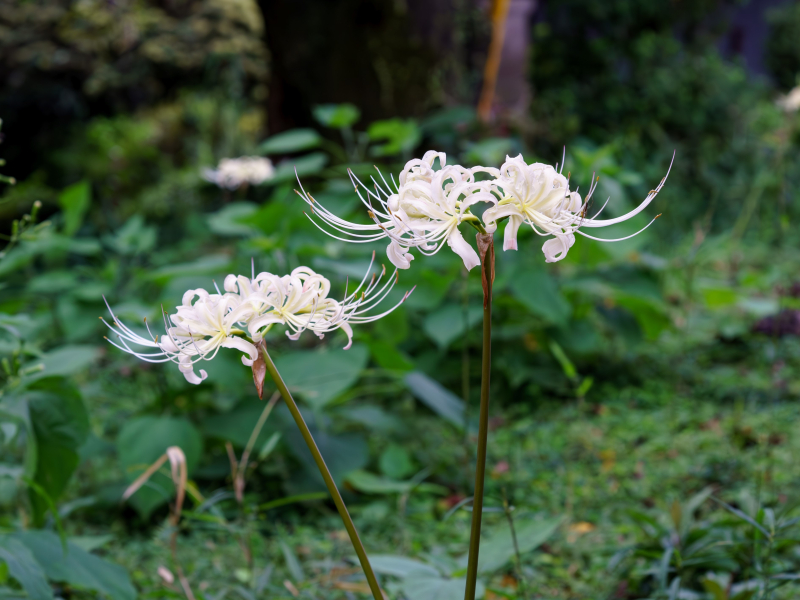
2024.09.20
ヒヨドリバナ
ヒヨドリバナが咲いています。山地の草原などに生えるキク科の多年草です。キャンパス内では9月にススキ野原で群生します。和名はヒヨドリが鳴くころに咲くことに由来するという説と、乾燥した花がらを火おこしに使ったことから火取花(ひとりばな)と呼ばれ、ヒヨドリバナになったという説があります。
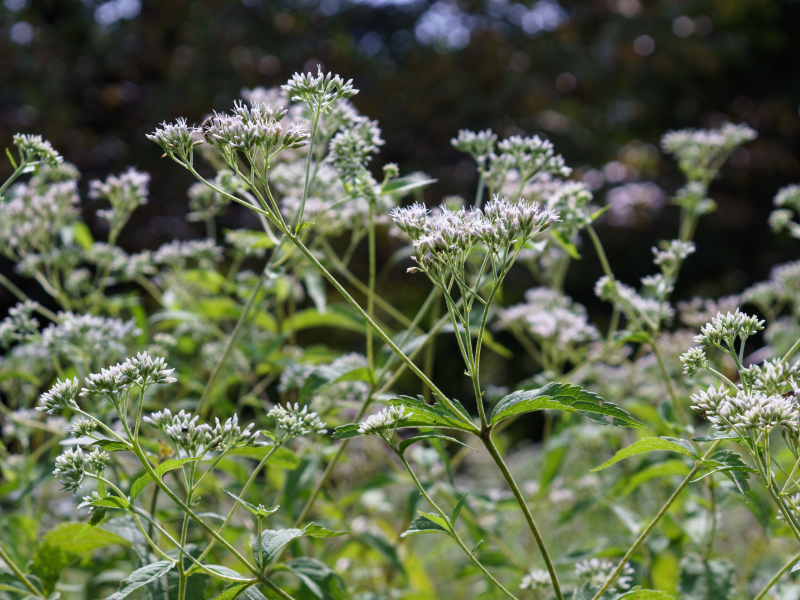
"Hiyodori-Bana (ヒヨドリバナ)" plants are in bloom. They are the perennial plants of the Asteraceae family that grow on the grass fields in mountains. They grow in colonies on the Japanese pampas grass field in September on our campus. There are two possible origins for its name: the one is that they bloom when "Hiyodori (ヒヨドリ)" birds sing and the other is that the dead flowers are used to start a fire.
2024.09.17
ヤブハギ
ヤブハギが咲いています。マメ科の多年草で、和名は藪に生える萩(ハギ)という意味です。近縁種が数種あり、互いによく似ています。本種は葉が茎の一部に集まってつき、葉の裏面に毛が少ないことで見分けることができます。
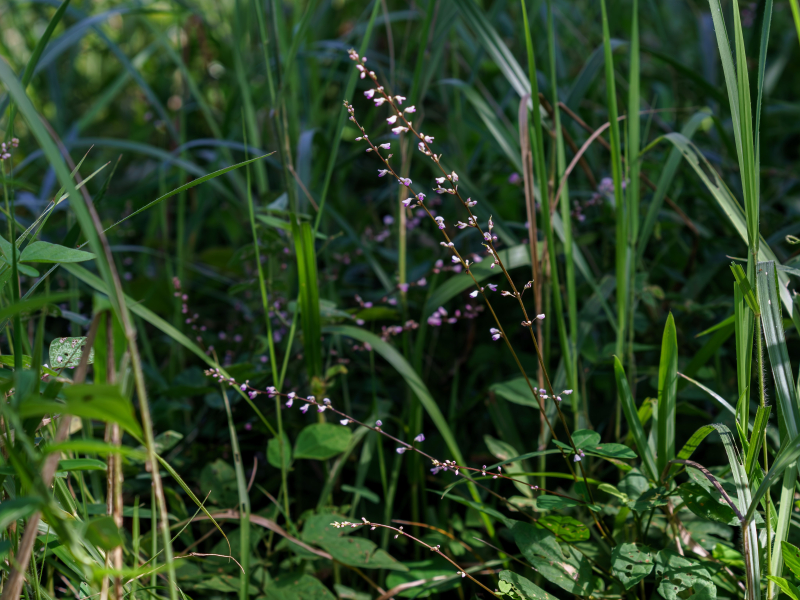
"Yabuhagi (ヤブハギ)" plants are in bloom. They are the perennial plants that belong to the leguminous plants. The name comes from the fact that they look like "Hagi (ハギ)" plants and grow in bushes. There are a few relative species and they are very similar to each other. You can tell Yabuhagi from the others by the fact that they bear their leaves on the same area on the stem and there is less hair on the back of their leaves.
2024.09.13
カナムグラ
カナムグラが咲いています。つる性の多年草で、茎には下向きのトゲがあります。花は風媒花で、あまり目立ちませんが、たくさんの花粉を作ります。秋の花粉症の原因の一つとされる一方で、薬草として利用されている植物でもあります。
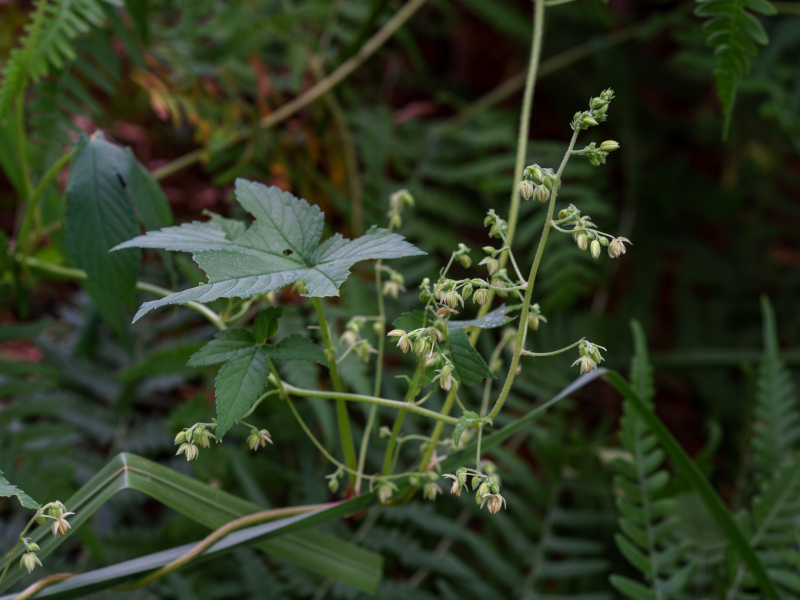
2024.09.10
カワラケツメイ
カワラケツメイが咲いています。明るい草地に生えるマメ科の植物です。花はマメ科によく見られる蝶形花ではなく、5枚の花弁がほぼ同じ大きさ同じ形です。和名は中国から伝わった決明(ケツメイ)という生薬と似た薬効があり、河原に自生することに由来します。
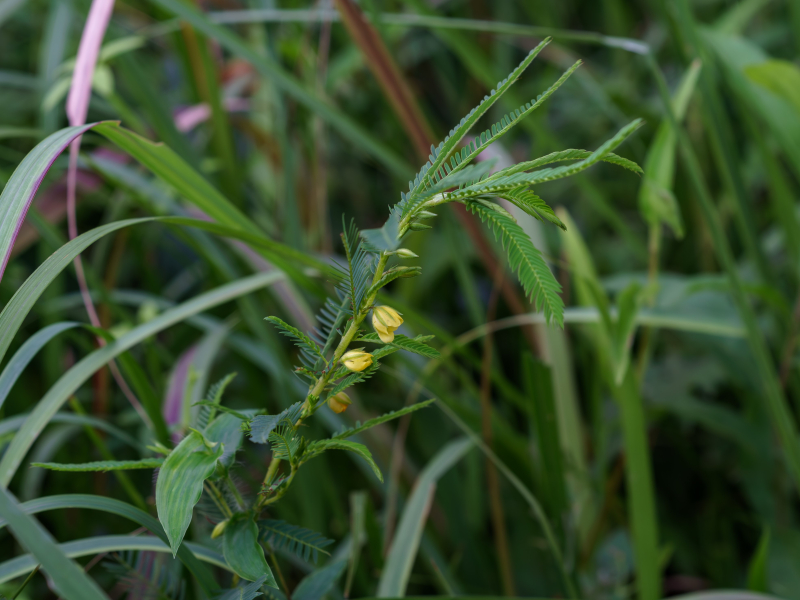
2024.09.06
ツルボ
ツルボが咲いています。地下に球根のある多年草で、葉が春と秋の2回出ることが特徴です。春に出た葉は夏に枯れます。そのため、夏に草刈りが行われるような場所では、他の植物が刈られてしまった後に葉を伸ばし花を咲かせることができるため、ツルボが群生していることがあります。

2024.09.03
オトコエシ
オトコエシが咲いています。草地など明るいところに生える多年草です。同じ属で秋の七草のひとつオミナエシ(女郎花)と比べて、茎や葉が大きく、全体に毛が多いなどの特徴からオトコエシ(男郎花)と呼ばれています。
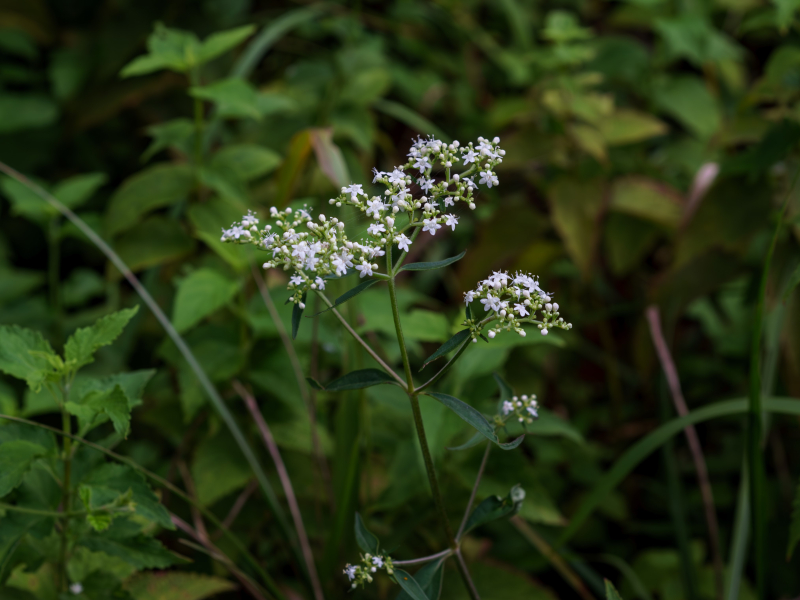
"Otokoeshi (オトコエシ)" plants are in bloom. They are the perennial plants that grow in well-lighted places such as grass fields. The name comes from the fact that they have masculine characteristics such as bigger stems and leaves and much hair compared to "Ominaeshi (オミナエシ)", which belongs to the same group and is listed as one of the seven fall harbs "Akino-Nanakusa (秋の七草)".
- 1 / 1

















